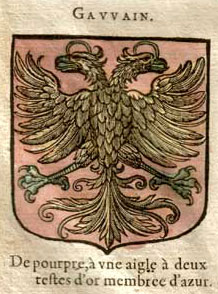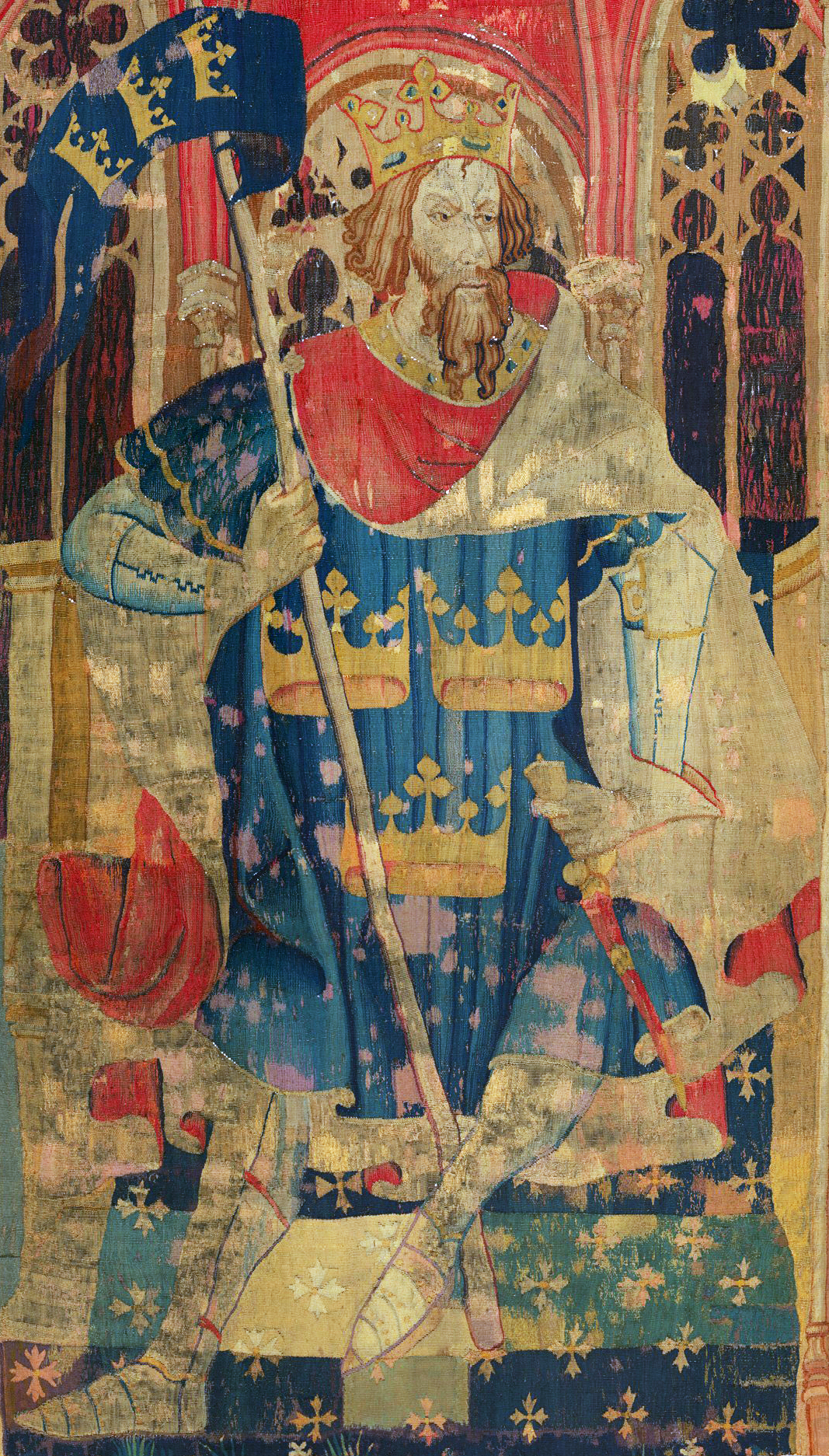|
The Greene Knight
''The Greene Knight'' is a late medieval rhyming romance, found in the Percy Folio Manuscript. The storyline effectively parallels the more famous ''Sir Gawain and the Green Knight'' in describing the dealings of Gawain, King Arthur's nephew, with the Greene Knight. The text was edited by Thomas Hahn for the Camelot Project. Key differences adduced by Hahn from the longer poem include rapid pacing, more explicit character motivations, and a rhyme scheme more suitable for popular recitation. Hahn concludes "In many ways, in fact, ''The Greene Knight'', as the later poem, seems almost a summary or guide in its determined spelling out of motives and events, its domestication of the challenging and mysterious, and its explanation of marvels and ambiguities." Hahn writes, "The language of ''The Greene Knight'' suggests that it was originally composed about 1500 in the South Midlands. It is marked for two fitts (perhaps indicating performance sessions), and falls into eighty-six tail- ... [...More Info...] [...Related Items...] OR: [Wikipedia] [Google] [Baidu] |
Percy Folio
The Percy Folio is a folio book of English ballads used by Thomas Percy to compile his '' Reliques of Ancient English Poetry''. Although the manuscript itself was compiled in the 17th century, some of its material goes back well into the 12th century. It was the most important of the source documents used by Francis James Child for his 1883 collection '' The English and Scottish Popular Ballads''. The manuscript Those who owned the manuscript before Percy did not treat it well; its owners had probably regarded its Middle English and border dialect as incomprehensible and worthless. When Percy first came across the manuscript, in the house of its former owner Humphrey Pitt at Shifnal, Shropshire, pages were being used by his housemaids to start fires. Percy had the manuscript bound, and the bookbinder inflicted additional damage in trimming the edges of the sheets, losing first or last lines on many pages. Percy did not treat the manuscript particularly well himself; he wrote notes ... [...More Info...] [...Related Items...] OR: [Wikipedia] [Google] [Baidu] |
Sir Gawain And The Green Knight
''Sir Gawain and the Green Knight'' is a late 14th-century chivalric romance in Middle English alliterative verse. The author is unknown; the title was given centuries later. It is one of the best-known Arthurian stories, with its plot combining two types of folk motifs: the beheading game and the exchange of winnings. Written in stanzas of alliterative verse, each of which ends in a rhyming bob and wheel, it draws on Welsh, Irish, and English stories, as well as the French chivalric tradition. It is an important example of a chivalric romance, which typically involves a hero who goes on a quest that tests his prowess. It remains popular in modern English renderings from J. R. R. Tolkien, Simon Armitage, and others, as well as through film and stage adaptations. The story describes how Sir Gawain, who was not yet a knight of King Arthur's Round Table, accepts a challenge from a mysterious " Green Knight" who dares any man to strike him with his axe if he will take a re ... [...More Info...] [...Related Items...] OR: [Wikipedia] [Google] [Baidu] |
Gawain
Gawain ( ), also known in many other forms and spellings, is a character in Matter of Britain, Arthurian legend, in which he is King Arthur's nephew and one of the premier Knights of the Round Table. The prototype of Gawain is mentioned under the name Gwalchmei in the earliest Welsh sources. He has subsequently appeared in many Arthurian tales in Welsh, Latin, French, English, Scottish, Dutch, German, Spanish, and Italian, notably as the protagonist of the Middle English poem ''Sir Gawain and the Green Knight''. Other works featuring Gawain as their central character include ''De Ortu Waluuanii'', ''Diu Crône'', ''Ywain and Gawain'', ''Golagros and Gawane'', ''Sir Gawain and the Carle of Carlisle'', ''L'âtre périlleux'', ''La Mule sans frein'', ''La Vengeance Raguidel'', ''Le Chevalier à l'épée'', ''Vulgate Cycle, Le Livre d'Artus'', ''The Awntyrs off Arthure'', ''The Greene Knight'', and ''The Wedding of Sir Gawain and Dame Ragnelle, The Weddynge of Syr Gawen and Dame ... [...More Info...] [...Related Items...] OR: [Wikipedia] [Google] [Baidu] |
King Arthur
According to legends, King Arthur (; ; ; ) was a king of Great Britain, Britain. He is a folk hero and a central figure in the medieval literary tradition known as the Matter of Britain. In Wales, Welsh sources, Arthur is portrayed as a leader of the Sub-Roman Britain, post-Roman Britons in battles against the Anglo-Saxons in the late-5th and early-6th centuries. He first appears in two early medieval historical sources, the ''Annales Cambriae'' and the ''Historia Brittonum'', but these date to 300 years after he is supposed to have lived, and most historians who study the period Historicity of King Arthur, do not consider him a historical figure.Tom Shippey, "So Much Smoke", ''review'' of , ''London Review of Books'', 40:24:23 (20 December 2018) His name also occurs in early Welsh-language literature, Welsh poetic sources, such as ''Y Gododdin''. The character developed through Welsh mythology, appearing either as a great warrior defending Britain from human and supernatura ... [...More Info...] [...Related Items...] OR: [Wikipedia] [Google] [Baidu] |
Green Knight
The Green Knight (, , ) is a heroic character of the Matter of Britain, originating in the 14th-century poem '' Sir Gawain and the Green Knight'' and the related medieval work '' The Greene Knight''. His true name is revealed to be Bertilak de Hautdesert (spelled in some translations as "Bercilak" or "Bernlak") in ''Sir Gawain'', while ''The Greene Knight'' names him "Bredbeddle". The Green Knight later features as one of Arthur's greatest champions in the fragmentary ballad '' King Arthur and King Cornwall'', again with the name "Bredbeddle". In ''Sir Gawain and the Green Knight'', Bertilak is transformed into the Green Knight by Morgan le Fay, a traditional adversary of King Arthur, to test his court. However, in ''The Greene Knight'', he is transformed by a different woman for the same purpose. In both stories, he sends his wife to seduce Gawain as a further test. The ''King Arthur and King Cornwall'' ballad portrays him as an exorcist and one of the most powerful knights of ... [...More Info...] [...Related Items...] OR: [Wikipedia] [Google] [Baidu] |
Thomas Hahn
Thomas Hahn (born 1946) is an American professor of medieval literature and English who has taught since 1973 at the University of Rochester. After undergraduate studies at Fordham, he completed a Ph.D. at UCLA in 1974. He is especially known for his work on medieval European travel narratives, race in pre-modern Europe, and the modern reception of Robin Hood. He has advised over three dozen Ph.D. students during his fifty years at Rochester. Hahn's interest in medieval English literature, as well as its intersection with popular culture, is reflected both in his publications and in the conferences he has organized. Career Becoming an assistant professor of English at the University of Rochester in 1973, Hahn was promoted to associate professor in 1979 and full professor in 1993. Hahn edited a collection of the medieval poems about Sir Gawain for the TEAMS Middle English Texts Series, ''Sir Gawain: Eleven Romances and Tales'', in 1995. His work with the Middle English Texts Seri ... [...More Info...] [...Related Items...] OR: [Wikipedia] [Google] [Baidu] |
Western Michigan University
Western Michigan University (Western Michigan, Western or WMU) is a Public university, public research university in Kalamazoo, Michigan, United States. It was initially established as Western State Normal School in 1903 by Governor Aaron T. Bliss for the training of teachers. It was renamed Western Michigan University in 1957. Western is one of the eight research universities in the state of Michigan and is Carnegie Classification of Institutions of Higher Education, classified among "R2: Doctoral Universities – High research activity". The university has seven degree-granting colleges, offering 147 undergraduate degree programs, 73 master's degree programs, 30 doctoral programs, and 1 specialist degree program. It is governed by an eight-member board of regents whose members are appointed by the governor of Michigan and confirmed by the Michigan Senate for eight-year terms. The university's athletic teams compete in NCAA Division I, Division I of the National Collegiate At ... [...More Info...] [...Related Items...] OR: [Wikipedia] [Google] [Baidu] |
16th-century Books
The 16th century began with the Julian calendar, Julian year 1501 (represented by the Roman numerals MDI) and ended with either the Julian or the Gregorian calendar, Gregorian year 1600 (MDC), depending on the reckoning used (the Gregorian calendar introduced a lapse of 10 days in October 1582). The Renaissance in Italy and Europe saw the emergence of important artists, authors and scientists, and led to the foundation of important subjects which include accounting and political science. Copernicus proposed the Copernican heliocentrism, heliocentric universe, which was met with strong resistance, and Tycho Brahe refuted the theory of celestial spheres through observational measurement of the SN 1572, 1572 appearance of a Milky Way supernova. These events directly challenged the long-held notion of an immutable universe supported by Ptolemy and Aristotle, and led to major revolutions in astronomy and science. Galileo Galilei became a champion of the new sciences, invented the first ... [...More Info...] [...Related Items...] OR: [Wikipedia] [Google] [Baidu] |
Arthurian Literature In English
According to legends, King Arthur (; ; ; ) was a king of Britain. He is a folk hero and a central figure in the medieval literary tradition known as the Matter of Britain. In Welsh sources, Arthur is portrayed as a leader of the post-Roman Britons in battles against the Anglo-Saxons in the late-5th and early-6th centuries. He first appears in two early medieval historical sources, the ''Annales Cambriae'' and the ''Historia Brittonum'', but these date to 300 years after he is supposed to have lived, and most historians who study the period do not consider him a historical figure.Tom Shippey, "So Much Smoke", ''review'' of , ''London Review of Books'', 40:24:23 (20 December 2018) His name also occurs in early Welsh poetic sources, such as ''Y Gododdin''. The character developed through Welsh mythology, appearing either as a great warrior defending Britain from human and supernatural enemies or as a magical figure of folklore, and was sometimes associated with the Welsh ot ... [...More Info...] [...Related Items...] OR: [Wikipedia] [Google] [Baidu] |





